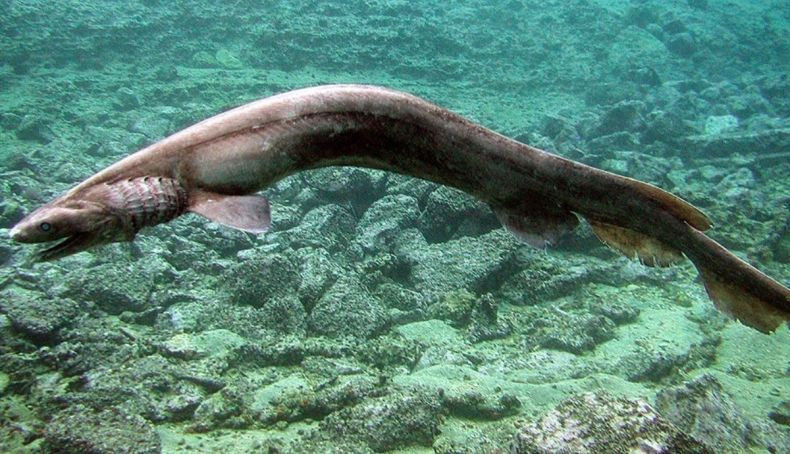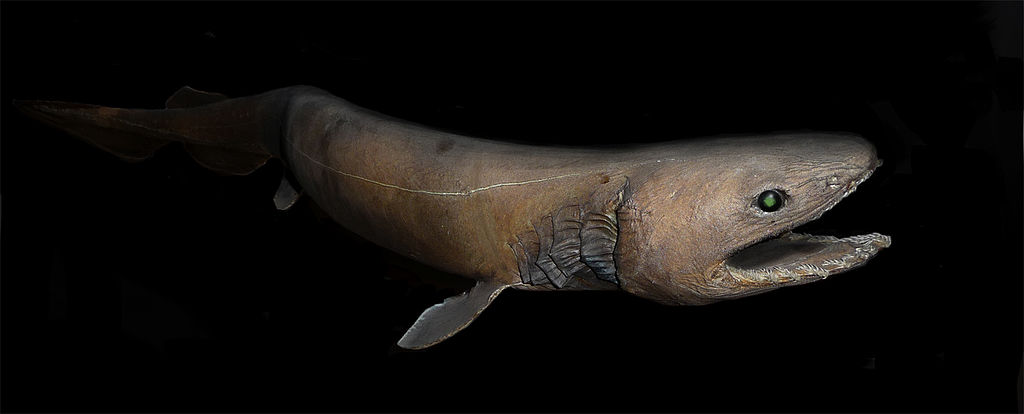In the depths of the oceans, where darkness reigns and pressure crushes almost any creature, inhabits one of the oldest and most mysterious beings on the planet: the eel shark. This impressive marine animal has survived almost unchanged for 80 million years, which has earned him the nickname living fossil. Its existence is a reminder of how little we still know about the abyssal depths and how nature can maintain a perfect balance over time.
🧬 Unique features of the Anguila Shark
The Anguilla Shark, scientifically known as Chlamydoselacus anguineus, it has a morphology very different from that of sharks that we are used to seeing. His body is long, thin and flexible, very similar to that of an eel, which allows him to slide fluently between deep waters like a marine snake. It has an elongated mouth full of more than 300 tiny teeth, organized in several rows, designed to catch slippery dams such as fish and squid.
His skin is of a dark or grayish brown color, perfectly adapted to its gloomy environment. Unlike other sharks, it does not have prominent dorsal fins or striking colors, which allows it to go unnoticed in the bottom of the ocean.
🌊 An inhabitant of the depths
This shark lives at depths that range between 500 and 1,500 meters, where sunlight practically does not exist. It prefers cold temperatures and a quiet environment, far from human activity. Therefore, the encounters with the Anguilla shark are extremely rare, which has contributed to its aura of mystery.
Despite its archaic appearance, it is an efficient predator. He moves slowly, stalking his prey in the gloom, and when he attacks, he throws his body quickly, taking advantage of his great flexibility to capture precisely.
🔬 A treasure for science
The existence of the Anguilla shark has fascinated scientists and biologists for decades. Its poor morphological evolution makes it a key piece to understand how some species have managed to survive for millions of years without hardly modifying its original design. It represents a living example that, sometimes, evolution does not need great changes when a creature is already perfectly adapted to its surroundings.
In addition, studying this shark can offer clues about biological processes in extreme conditions, which could be applied in fields such as medicine, underwater robotics or even in the search for life on other planets.
📜 The enigma of your behavior
Due to the inaccessible of its habitat, little is known about the daily life of the eel shark. His reproduction patterns, his exact longevity or his hunting dynamics are not well known. Every time one of these specimens is captured or recorded in their natural environment, it becomes an important scientific event.

🧠 Did you know this?
🦴 Is a living fossil: Its appearance has barely changed for more than 80 million years.
🦷 Has more than 300 teeth: Arranged in several rows, each as a tiny needle.
🌌 Can inspire space missions: Its resistance in extreme conditions can help design life systems for hostile environments.
📽️ Has appeared in horror movies: His strange appearance has inspired sea creatures in the cinema.
💬 What do you think?
Did you imagine that such an old creature could continue inhabiting our oceans? Do you think there are more "living fossils" to discover in the depths?
Leave it to the comments and continue to explore curiosities with Pancho 😺








